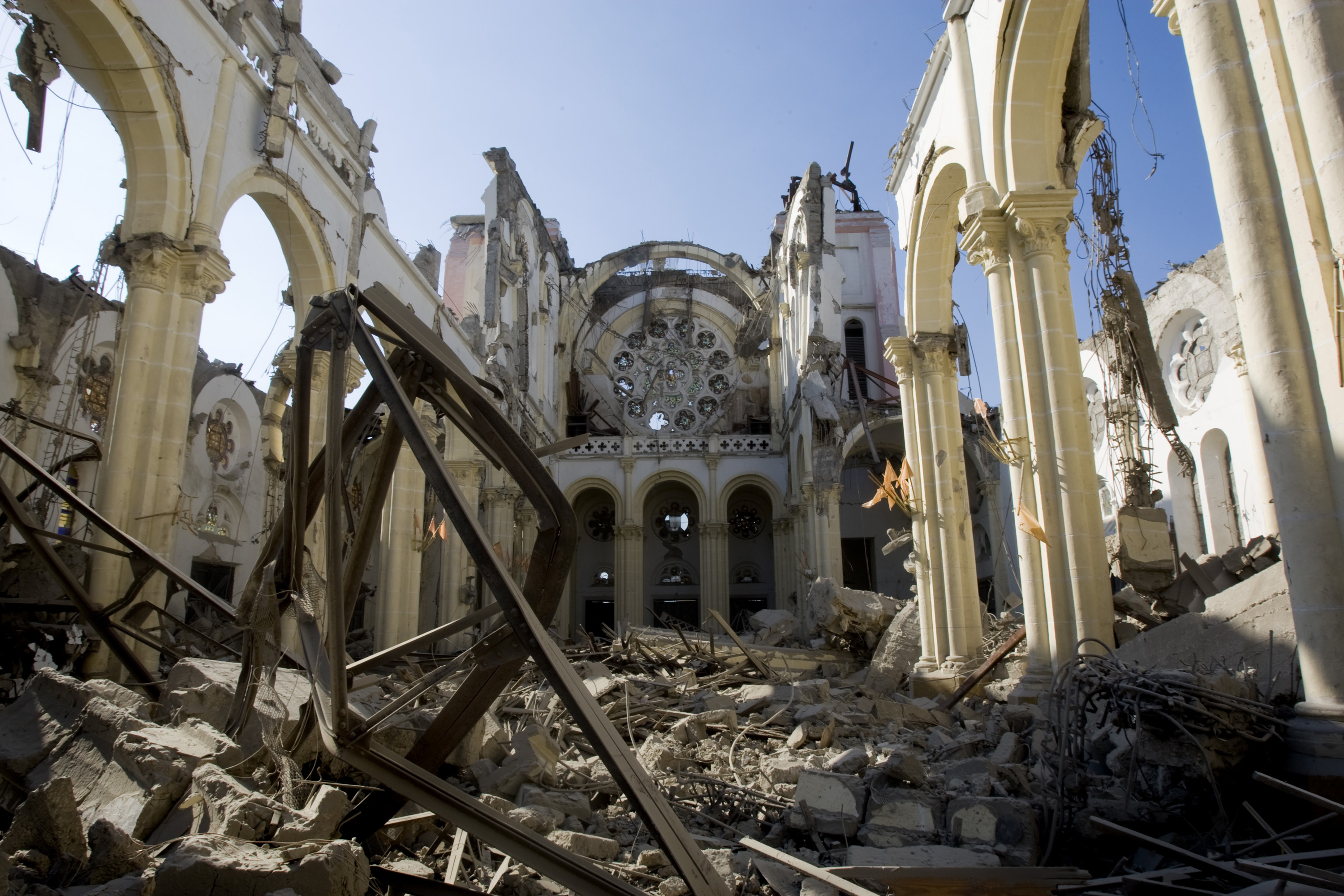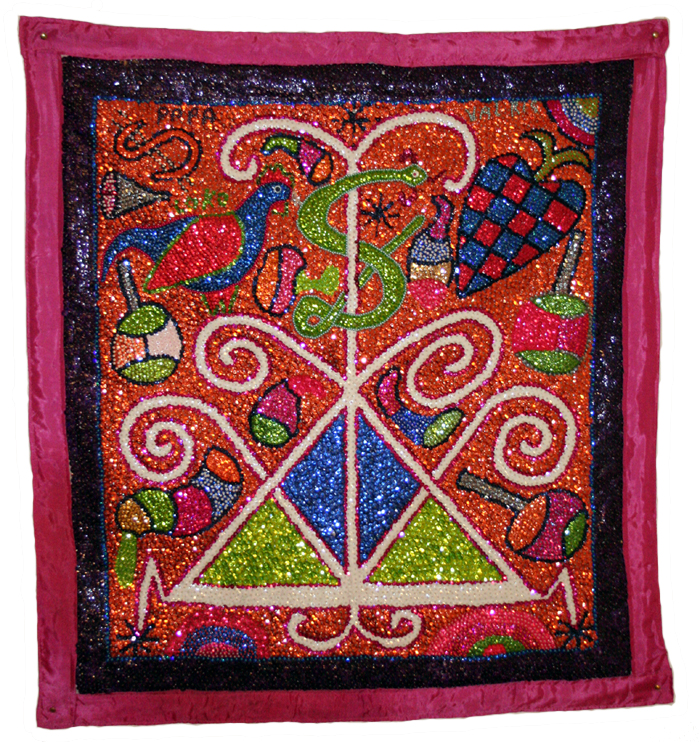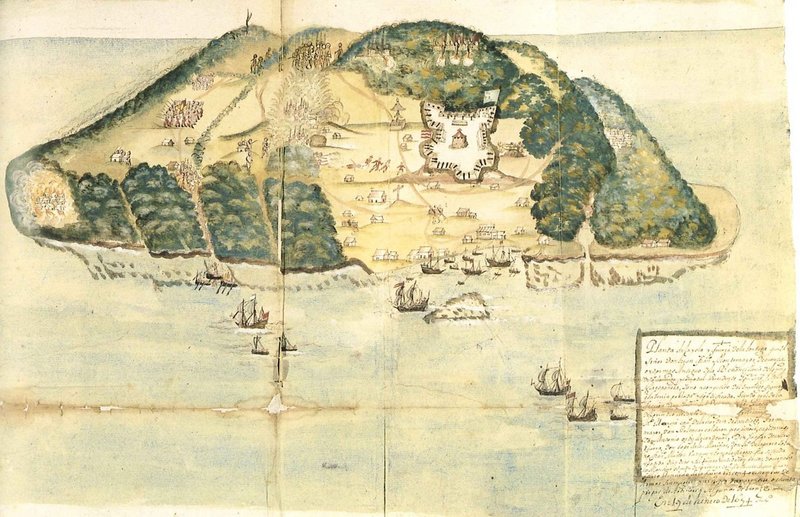|
St. Domingue
Saint-Domingue () was a French colony in the western portion of the Caribbean island of Hispaniola, in the area of modern-day Haiti, from 1659 to 1804. The name derives from the Spanish main city in the island, Santo Domingo, which came to refer specifically to the Spanish-held Captaincy General of Santo Domingo, now the Dominican Republic. The borders between the two were fluid and changed over time until they were finally solidified in the Dominican War of Independence in 1844. The French had established themselves on the western portion of the islands of Hispaniola and Tortuga by 1659. In the Treaty of Ryswick of 1697, Spain formally recognized French control of Tortuga Island and the western third of the island of Hispaniola. In 1791, slaves and some Dominican Creoles took part in the Vodou ceremony Bois Caïman and planned the Haitian Revolution. The slave rebellion later allied with Republican French forces following the abolition of slavery in the colony in 1793, alt ... [...More Info...] [...Related Items...] OR: [Wikipedia] [Google] [Baidu] |
Colony
In modern parlance, a colony is a territory subject to a form of foreign rule. Though dominated by the foreign colonizers, colonies remain separate from the administration of the original country of the colonizers, the ''metropole, metropolitan state'' (or "mother country"). This administrative colonial separation makes colonies neither incorporated territories nor client states. Some colonies have been organized either as dependent territory, dependent territories that are Chapter XI of the United Nations Charter, not sufficiently self-governed, or as self-governing colony, self-governed colonies controlled by settler colonialism, colonial settlers. The term colony originates from the ancient rome, ancient Roman ''colonia (Roman), colonia'', a type of Roman settlement. Derived from ''colon-us'' (farmer, cultivator, planter, or settler), it carries with it the sense of 'farm' and 'landed estate'. Furthermore the term was used to refer to the older Greek ''apoikia'' (), which w ... [...More Info...] [...Related Items...] OR: [Wikipedia] [Google] [Baidu] |
Catholic Church In Haiti
The Catholic Church in Haiti is part of the worldwide Catholic Church, under the spiritual leadership of the pope, the Curia in Rome and the Conference of Haitian Bishops. There are ten dioceses including two archdioceses. The national patron saint of Haiti is Our Mother of Perpetual Help. Colonisation and the first wave of evangelization (1511–1806) "The Dioceses of Santo Domingo and Concepción de la Vega were founded in 1511, and the island of Hispaniola that Haiti shares with the Dominican Republic, was divided between these bishoprics. In 1527 Concepción was incorporated into Santo Domingo, which remained the only diocese until 1862. Many regular clergy came with the French into the French territory, especially the Dominicans and the Capuchins. The Dominicans devoted themselves especially to the mission in the western part of the colony, and were for a time supported therein by other orders and secular priests."Text has been adapted from: Reinhold, G. (1910). "Haiti ... [...More Info...] [...Related Items...] OR: [Wikipedia] [Google] [Baidu] |
Pirate
Piracy is an act of robbery or criminal violence by ship or boat-borne attackers upon another ship or a coastal area, typically with the goal of stealing cargo and other valuable goods. Those who conduct acts of piracy are called pirates, vessels used for piracy are pirate ships. The earliest documented instances of piracy were in the 14th century BC, when the Sea Peoples, a group of ocean raiders, attacked the ships of the Aegean and Mediterranean civilisations. Narrow channels which funnel shipping into predictable routes have long created opportunities for piracy, as well as for privateering and commerce raiding. Historic examples include the waters of Gibraltar, the Strait of Malacca, Madagascar, the Gulf of Aden, and the English Channel, whose geographic structures facilitated pirate attacks. The term ''piracy'' generally refers to maritime piracy, although the term has been generalized to refer to acts committed on land, in the air, on computer networks, and (in scien ... [...More Info...] [...Related Items...] OR: [Wikipedia] [Google] [Baidu] |
French First Republic
In the history of France, the First Republic (french: Première République), sometimes referred to in historiography as Revolutionary France, and officially the French Republic (french: République française), was founded on 21 September 1792 during the French Revolution. The First Republic lasted until the declaration of the First Empire on 18 May 1804 under Napoléon Bonaparte, although the form of the government changed several times. This period was characterized by the fall of the monarchy, the establishment of the National Convention and the Reign of Terror, the Thermidorian Reaction and the founding of the Directory, and, finally, the creation Creation may refer to: Religion *''Creatio ex nihilo'', the concept that matter was created by God out of nothing * Creation myth, a religious story of the origin of the world and how people first came to inhabit it * Creationism, the belief tha ... of the French Consulate, Consulate and Napoleon's rise to power. End of the m ... [...More Info...] [...Related Items...] OR: [Wikipedia] [Google] [Baidu] |
Bois Caïman
Bois Caïman ( ht, Bwa Kayiman, lit=Alligator Forest) was the site of the first major meeting of Slavery in Haiti, enslaved blacks during which the first major slave insurrection of the Haitian Revolution was planned. Role during the Haitian Revolution Before the Bois Caiman ceremony, Haitian Vodou, Vodou rituals were seen as an event of social gathering where enslaved Africans had the ability to organize. These meetings and opportunities to organize were considered harmless by white slave owners, therefore, they were permitted. It is also argued that Vodou created a more homogeneous black culture in Haiti. On the night of August 14, 1791, representative slaves from nearby plantations gathered to participate in a secret ceremony conducted in the woods by nearby Cap-Haïtien, Le Cap in the French colony of Saint-Domingue. Presided over by Dutty Boukman, a prominent enslaved African leader and Houngan, and Cécile Fatiman, a Mambo (Vodou), mambo, the ceremony served as both a re ... [...More Info...] [...Related Items...] OR: [Wikipedia] [Google] [Baidu] |
Haitian Vodou
Haitian Vodou is an African diasporic religion that developed in Haiti between the 16th and 19th centuries. It arose through a process of syncretism between several traditional religions of West and Central Africa and Roman Catholicism. There is no central authority in control of the religion and much diversity exists among practitioners, who are known as Vodouists, Vodouisants, or Serviteurs. Vodou revolves around spirits known as '' lwa.'' Typically deriving their names and attributes from traditional West and Central African divinities, they are equated with Roman Catholic saints. The lwa divide up into different groups, the ''nanchon'' ("nations"), most notably the Rada and the Petwo. Various myths and stories are told about these lwa, which are regarded as subservient to a transcendent creator deity, Bondye. This theology has been labelled both monotheistic and polytheistic. An initiatory tradition, Vodouists usually meet to venerate the lwa in an ''ounfò'' (temple), run ... [...More Info...] [...Related Items...] OR: [Wikipedia] [Google] [Baidu] |
Saint Dominicans
Saint Dominicans (french: Saint-Domingais), or simply Dominicans (french: Domingais), also known as Saint Dominguans, or Dominguans, are the people who lived in the West Indian French colony of Saint-Domingue before the Haitian Revolution. Dominican Creoles formed an ethnic group native to Saint-Domingue, they were all of the people who were born in Saint Domingue. The Creoles were well educated, and they created much art, such as the famed St. Dominican French Opera; their society prized manners, good breeding, tradition, and honor. During and after the Haitian Revolution, many St. Dominicans fled to locations in the United States, other Antilles islands, New York City, Cuba, France, Jamaica, and especially New Orleans in Louisiana, where they made an enormous impact on Louisiana Creole culture. St. Dominican Society Origin of the Dominican Creoles French adventurers settled on Tortuga Island, which was close to the Spanish colony of Santo Domingo. As a result, in the late ... [...More Info...] [...Related Items...] OR: [Wikipedia] [Google] [Baidu] |
Tortuga (Haiti)
Tortuga Island (french: Île de la Tortue, ; ht, Latòti; es, Isla Tortuga, , ''Turtle Island'') is a Caribbean island that forms part of Haiti, off the northwest coast of Hispaniola. It constitutes the ''commune'' of Île de la Tortue in the Port-de-Paix arrondissement of the Nord-Ouest department of Haiti. Tortuga is in size and had a population of 25,936 at the 2003 Census. In the 17th century, Tortuga was a major center and haven of Caribbean piracy. Its tourist industry and references in many works have made it one of the most recognized regions of Haiti. History The first Europeans to land on Tortuga were the Spanish in 1492 during the first voyage of Christopher Columbus into the New World. On December 6, 1492, three Spanish ships entered the Windward Passage that separates Cuba and Haiti. At sunrise, Columbus noticed an island whose contours emerged from the morning mist. Because the shape reminded him of a turtle's shell, he chose the name of Tortuga. Tortuga wa ... [...More Info...] [...Related Items...] OR: [Wikipedia] [Google] [Baidu] |
Dominican War Of Independence
The Dominican War of Independence made the Dominican Republic a sovereign state on February 27, 1844. Before the war, the island of Hispaniola had been united for 22 years when the newly independent nation, previously known as the Captaincy General of Santo Domingo, was unified with the Republic of Haiti in 1822. The criollo class within the country overthrew the Spanish crown in 1821 before unifying with Haiti a year later. After the struggles that were made by Dominican patriots to free the country from Haitian control, they had to withstand and fight against a series of incursions that served to consolidate their independence (1844–56). Haitian soldiers would make incessant attacks to try to gain back control of the nation, but these efforts were to no avail, as the Dominicans would go on to win every battle. Background At the beginning of the 1800s, the colony of Santo Domingo, which had once been the headquarters of Spanish power in the New World, was in its worst decli ... [...More Info...] [...Related Items...] OR: [Wikipedia] [Google] [Baidu] |
Dominican Republic
The Dominican Republic ( ; es, República Dominicana, ) is a country located on the island of Hispaniola in the Greater Antilles archipelago of the Caribbean region. It occupies the eastern five-eighths of the island, which it shares with Haiti, making Hispaniola one of only two Caribbean islands, along with Saint Martin, that is shared by two sovereign states. The Dominican Republic is the second-largest nation in the Antilles by area (after Cuba) at , and third-largest by population, with approximately 10.7 million people (2022 est.), down from 10.8 million in 2020, of whom approximately 3.3 million live in the metropolitan area of Santo Domingo, the capital city. The official language of the country is Spanish. The native Taíno people had inhabited Hispaniola before the arrival of Europeans, dividing it into five chiefdoms. They had constructed an advanced farming and hunting society, and were in the process of becoming an organized civilization. The Taínos also in ... [...More Info...] [...Related Items...] OR: [Wikipedia] [Google] [Baidu] |
Captaincy General Of Santo Domingo
The Captaincy General of Santo Domingo ( es, Capitanía General de Santo Domingo ) was the first colony in the New World, established by Spain in 1492 on the island of Hispaniola. The colony, under the jurisdiction of the Real Audiencia of Santo Domingo, was granted administrative powers over the Spanish possessions in the Caribbean and most of its mainland coasts, making Santo Domingo the principal political entity of the early colonial period. Due to its strategic location, the Captaincy General of Santo Domingo served as headquarters for Spanish conquistadors on their way to the mainland and was important in the establishment of other European colonies in the Western Hemisphere. It is the site of the first European city in the Americas, Santo Domingo, and of the oldest castle, fortress, cathedral, and monastery in the region. The colony was a meeting point of European explorers, soldiers, and settlers who brought with them the culture, architecture, laws, and traditions of the ... [...More Info...] [...Related Items...] OR: [Wikipedia] [Google] [Baidu] |
Hispaniola
Hispaniola (, also ; es, La Española; Latin and french: Hispaniola; ht, Ispayola; tnq, Ayiti or Quisqueya) is an island in the Caribbean that is part of the Greater Antilles. Hispaniola is the most populous island in the West Indies, and the region's second largest in area, after the island of Cuba. The island is divided into two separate nations: the Spanish-speaking Dominican Republic (48,445 km2, 18,705 sq mi) to the east and the French/ Haitian Creole-speaking Haiti (27,750 km2, 10,710 sq mi) to the west. The only other divided island in the Caribbean is Saint Martin, which is shared between France ( Saint Martin) and the Netherlands (Sint Maarten). Hispaniola is the site of one of the first European settlements in the Americas, La Navidad (1492–1493), as well as the first proper town, La Isabela (1493–1500), and the first permanent settlement, the current capital of the Dominican Republic, Santo Domingo (est. 1498). These settlements were founded succe ... [...More Info...] [...Related Items...] OR: [Wikipedia] [Google] [Baidu] |





